BACK IN THE DAY--

This poster is for circus performances over a three-day period - in Hyannis, Massachusetts - beginning on August 30, 1937.
Burt Lancaster - who later became a famous Hollywood film star - began his career as an aerialist. He was employed through the federal government's "Federal Theatre Project" in the 1930s.
Before he became a famous movie star, Burt Lancaster was an aerialist performing with other circus members in traveling shows sponsored by the Federal Theatre Project (FTP).
During the Great Depression, some of the circus performers were people with talent who had been on relief. The federal government formed the "Federal Theatre Project," which gave out-of-work individuals a chance to perform while earning a living.
The troupe toured nationally, just like other circus companies, and featured standard circus fare - like clowns.
The Library of Congress describes this image, as follows:
The Circus Unit was part of the larger Variety Unit of the FTP [Federal Theatre Project]. Employing as many as 250 performers in 60 acts, circuses toured regionally and drew huge crowds that included both the young and old.
Many of the performers, such as Katie Sandwina, known as the world's strongest woman, had been in the circus for years, but the ranks also included individuals who had unique talents that were not typical of those who performed in traditional theater.
Performers included clowns, jugglers, tightrope walkers, cyclists, and aerialists ... Although few animals performed - Hallie Flanagan stated "There were no elephants on relief" - there was one elephant in the FTP named "Japino." ... At some point, Japino escaped and was accidently returned to Barnum and Bailey Circus, who quickly returned the escapee to its rightful owner.

This poster is for circus performances over a three-day period - in Hyannis, Massachusetts - beginning on August 30, 1937.
Burt Lancaster - who later became a famous Hollywood film star - began his career as an aerialist. He was employed through the federal government's "Federal Theatre Project" in the 1930s.
Before he became a famous movie star, Burt Lancaster was an aerialist performing with other circus members in traveling shows sponsored by the Federal Theatre Project (FTP).
During the Great Depression, some of the circus performers were people with talent who had been on relief. The federal government formed the "Federal Theatre Project," which gave out-of-work individuals a chance to perform while earning a living.
The troupe toured nationally, just like other circus companies, and featured standard circus fare - like clowns.
The Library of Congress describes this image, as follows:
The Circus Unit was part of the larger Variety Unit of the FTP [Federal Theatre Project]. Employing as many as 250 performers in 60 acts, circuses toured regionally and drew huge crowds that included both the young and old.
Many of the performers, such as Katie Sandwina, known as the world's strongest woman, had been in the circus for years, but the ranks also included individuals who had unique talents that were not typical of those who performed in traditional theater.
Performers included clowns, jugglers, tightrope walkers, cyclists, and aerialists ... Although few animals performed - Hallie Flanagan stated "There were no elephants on relief" - there was one elephant in the FTP named "Japino." ... At some point, Japino escaped and was accidently returned to Barnum and Bailey Circus, who quickly returned the escapee to its rightful owner.

A traveling circus including side shows. Some of those side shows featured overweight people, such as the individual pictured in this photo.
Originally published in the Chicago Herald & Examiner, this pictures is now part of a collection at the Wisconsin Historical Society, where it is described as follows:
Title: Circus Fat Man
Description: A circus
Young women were involved with circus life, including working with large animals. Marlena and Rosie are part of a fictional story, in Water for Elephants, but their counterparts, during the 1930s (and before), performed with actual circuses.
A newspaper reported the following story about this elephant and its trainer:
Sagacious old elephants and chic young girl trainers form one of the diverting combinations of the Great Sells-Floto Circus, which comes to the Ball Park today for its annual engagement. These unusually wise lumbering creatures appear in several displays and are guided by the slender hands and keen intellect of Mlle. Lorette, Irene Ledgett, Lillian Burslen [Burslem, according to Circus History.org] and Betty Stephens.
The Sells-Floto herds are said to be the best trained in this country and for five months, Charles Morgan, master tutor, sent them to school for eight hours each day.
News stories like this helped to make sure that people flocked to see the circus.
A note about the Sells-Floto Circus company. By 1929, it was part of the American Circus Corporation. That same year, Floto's new owner had a contract to perform at New York City's Madison Square Garden. When John Ringling - of the famous Ringling Brothers Circus - heard that news, he bought Sells-Floto. Ringling's web site provides the details:
In 1929, reacting to the fact that his competitor, the American Circus Corporation, had signed a contract to perform in New York's Madison Square Garden, [John] Ringling purchased American Circus for $1.7-million. In one fell swoop, Ringling had absorbed five major shows: Sells-Floto, Al G. Barnes, Sparks, Hagenbeck-Wallace, and John Robinson.
By the beginning of the 1930s, therefore, it was becoming more difficult for independent companies - depicted by the fictional Benzini Brothers in Water for Elephants - to remain independent.

In this photo, Lancaster and a fellow circus-unit performer (of the FTP) are showing their skills on the parallel bars.
Maria Rasputin - the daughter of the famous Russian monk who influenced the Romanov family and helped to care for Nicholas and Alexandra's son, Alexei - left Russia and became a circus lion tamer. She performed with the circus, in Europe and America, in the 1930s.
During a circus stop in Peru, Indiana, Maria was mauled by a bear. She left the circus shortly thereafter.
In this photo, from 1914, she is seen with her mother and father in the family's St. Petersburg apartment.














































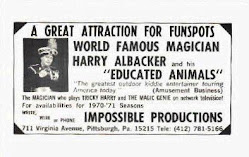

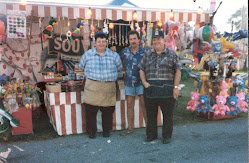




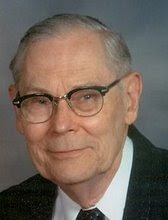
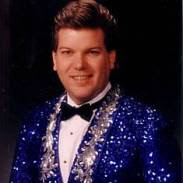




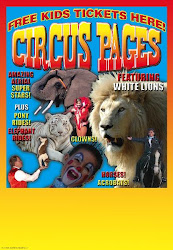

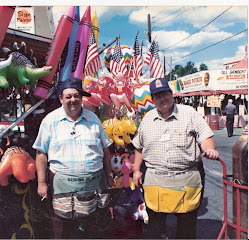
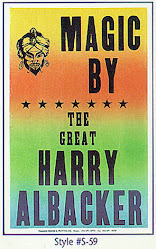

























No comments:
Post a Comment